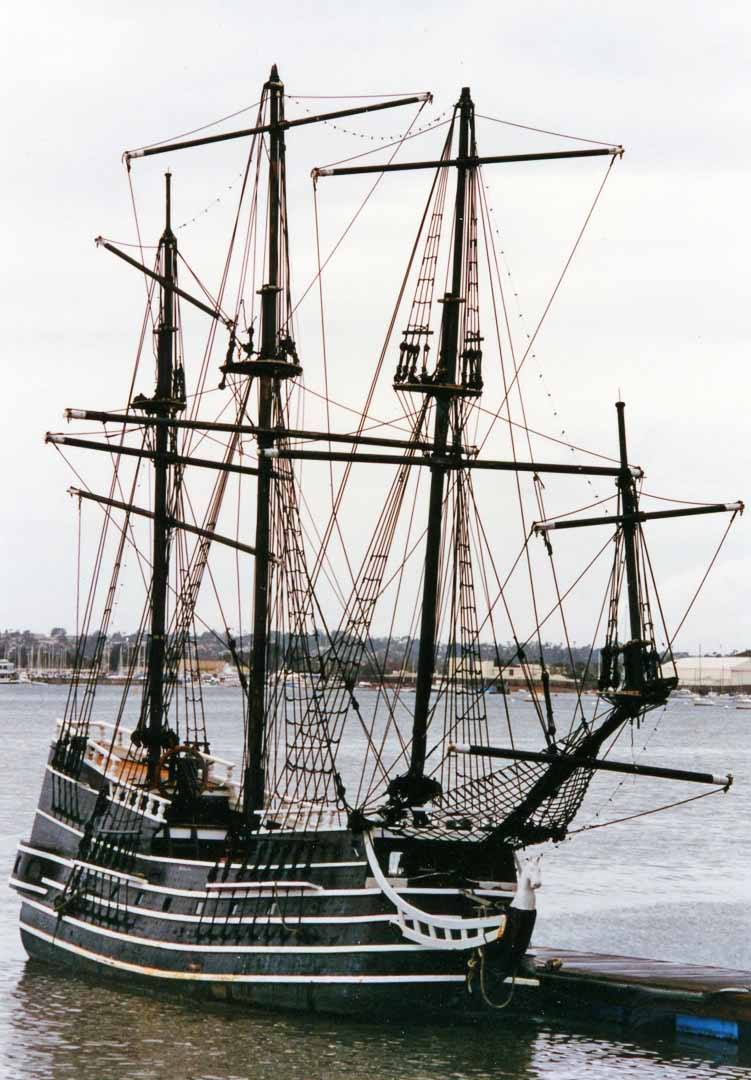
Imagine that. A pirate ship in San Diego; a Spanish Galleon in South Bay. In the early 1980s, Santana was a familiar sight as people drove down the Silver Strand, sitting at anchor with yards on all three masts and a figurehead of a white chess knight gleaming in the morning sun.
This unusual looking ship was located in a semi-protected area called Emory Cove, at the south end of what is now the Coronado Cays, adjacent to the S curves on the Strand.
Everyone saw her, few knew her story.
Back then, Emory Cove was safe haven (free anchorage) to dozens of liveaboarders. The vessels were decrepit and those living on board not much better. The Harbor Police called it “a thieves’ market.”
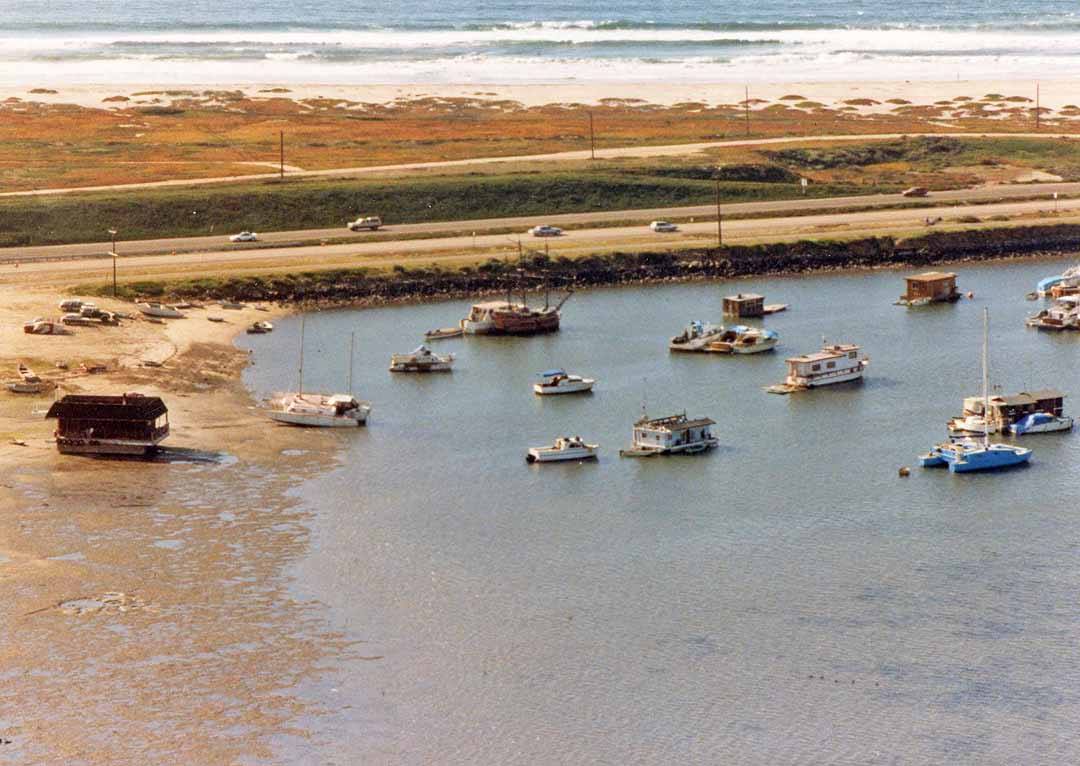
Not all the residents of Emory Cove were suspect. To the contrary, many were veterans of Vietnam, Korea and even World War II. Some were old and retired, waiting out their last days on small fixed incomes – people who couldn’t afford a slip, or rent; some who, for a short time, lived beyond the reach of the law.
It was this unholy ground where one man’s dream came to life. She was not built from plans, but from his imagination and a childhood fantasy. She was his replica version of a Spanish galleon and he named her “Santana.”
His name has long been forgotten, but the little vessel, despite a series of mishaps, is alive and well. Built by a retired civil service worker at North Island, the ship was constructed in his Chula Vista yard and then launched and fitted out in Emory Cove.
One day, with family and friends on board, he proudly motored Santana out towards the mouth of San Diego Bay. When he set her upper tops’ls the wind capsized the ship in seconds. Everyone was tossed into the water.
Not being a sailor, he had neglected to adequately ballast the vessel.
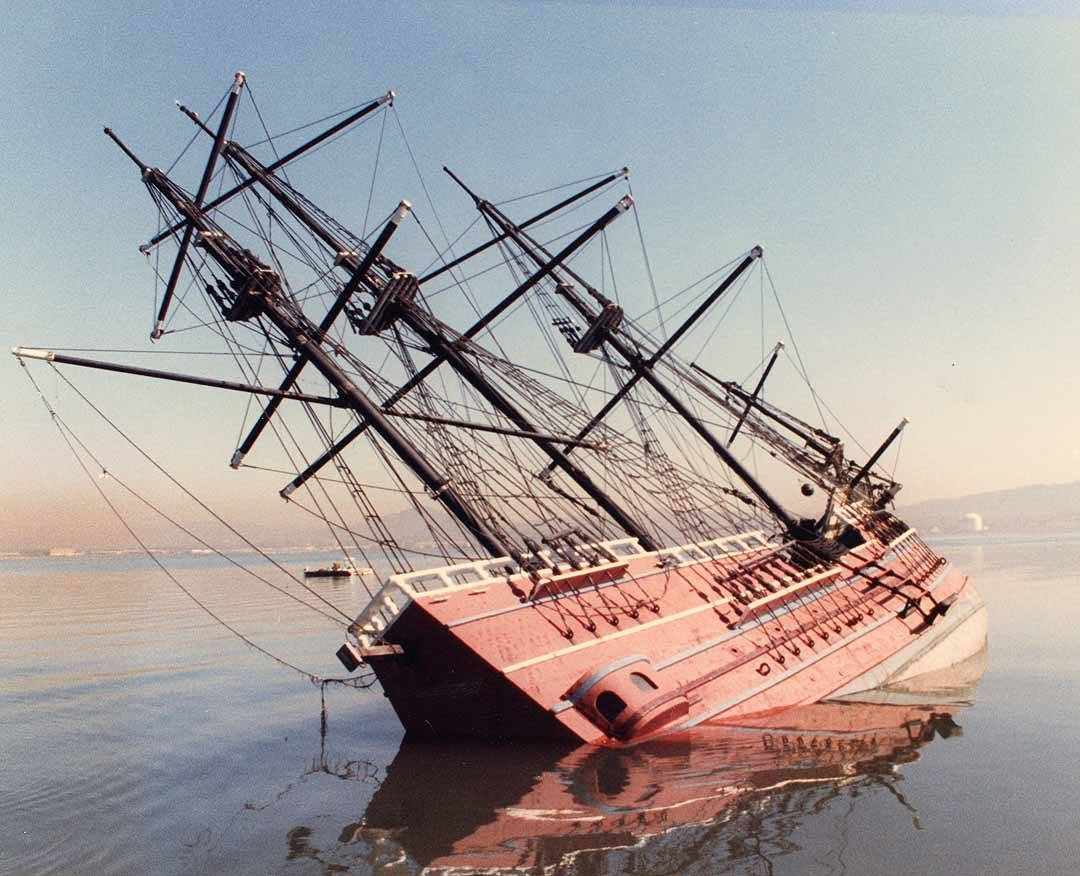
The old man died shortly thereafter. Years passed before we heard any more from Santana. In the mid-1980s a vicious January storm blew through Emory Cove, submerging the Silver Strand, making Coronado an island again, and sinking many of the makeshift vessels hiding in the cove.
When it was over, Santana was on her side once more; her decks four feet underwater. A dream shattered, yet again.
There’s an old museum saying that says, “Put yards (spars) on a sailing ship, and they will come.”
The son, caught up in his late father’s dream, refloated the homemade galleon believing the ship could be a treasure trove, if marketed properly. From a distance, the profile of this odd little ship, with her crossed yards, certainly attracted attention.
In 1993 the son loaded the vessel with friends and family and motored towards the harbor entrance. Just as before, the winds hit the upper tops’ls and over she went, spilling her cargo of people into the bay.

The following week an ad appeared in the San Diego Log saying, “FOR SALE. 57-foot Pirate Ship. Diesel driven English Galleon gets you to open water for square-rig sailing. Too unique to describe this newly restored ghost from the past, 25 years in the making. Make offer.”
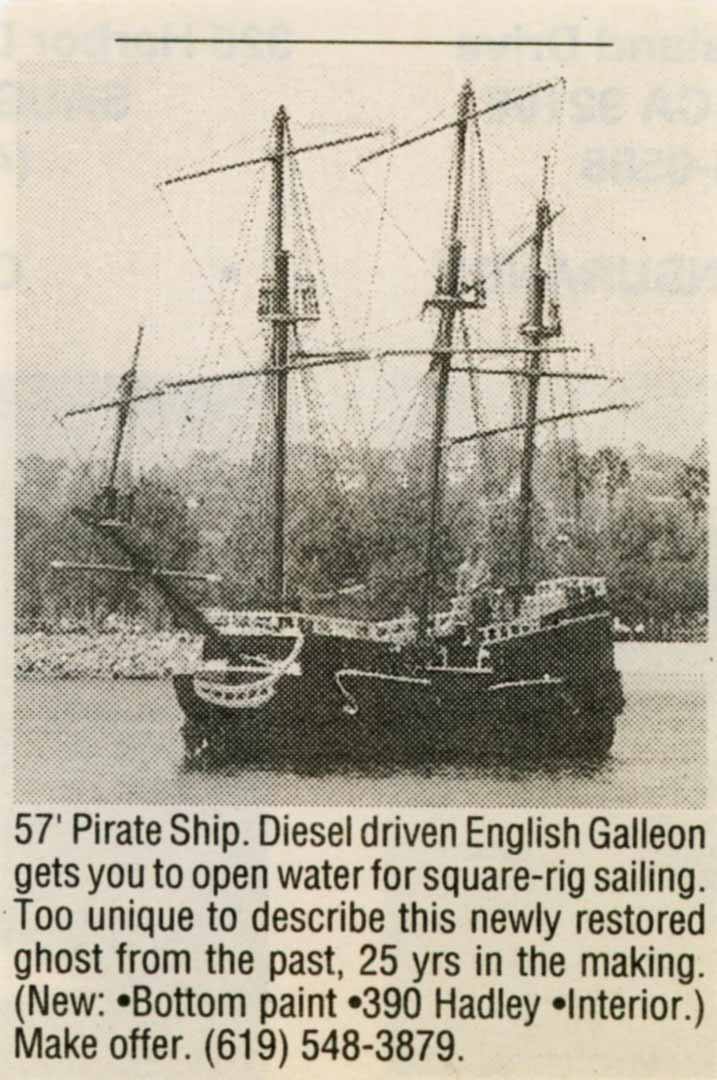
For decades people have asked what happened to the Spanish galleon.
Emory Cove was cleaned out, the Coronado Cays were built, and the Port of San Diego re-designated mooring laws to forbid randomly living aboard your vessel in San Diego Bay. There are no more “free anchorages.”
[Ironically, the original Spanish Land Grants and Deeds designated San Diego Bay should always be a free anchorage. My, but times change, don’t they?]

What we know now is that the tiny ship’s name had been changed to “Time Bandit.” Eventually she was sold to an entrepreneur who kept her at the Fun Zone on Balboa Island. After one or two more owners and more failures, a group in Big Bear purchased her. Time Bandit was moved on a flatbed truck up the winding San Bernardino mountain roads to her new destination.
It turned out to be the longest and most exciting circumnavigation of her life. It started at sea level in Dana Point and ended at 5,000 feet in Big Bear Lake – a voyage involving 28 different permits and taking two and a half days on the road (phone and power cables had to be raised along the way).

Today Time Bandit is described as “a 1/3 scale replica of a 16th century Spanish galleon.” She provides endless entertainment to paying guests on pirate-themed two-hour voyages on Big Bear Lake – a fresh water lake stretching seven miles in length and one mile wide. She operates out of Holloway’s Marina & RV Park. Tours take place on the lake May-November, weather permitting.
Voyages involve a full bar, snacks, loud pirate music (everything from Eric Wolfgang Korngold to Jimmy Buffett) and a blend of education, as the captain shares the history of Big Bear Lake and, of course, of Time Bandit.
The new owners re-glassed her hull and tricked her out inside and out. They added railroad ties and cement for ballast. The full-keeled ship measures 56’ overall and 44’ on the water.

The chess piece of a figurehead (a white knight/horses head), admired by Coronadans for years, has rotted away. Today a pirate skeleton points her way.
Some will remember her unsuccessful beginnings, or at least sitting anchored in Emory Cove just a few hundred yards from another Coronado character vessel – the flying saucer.
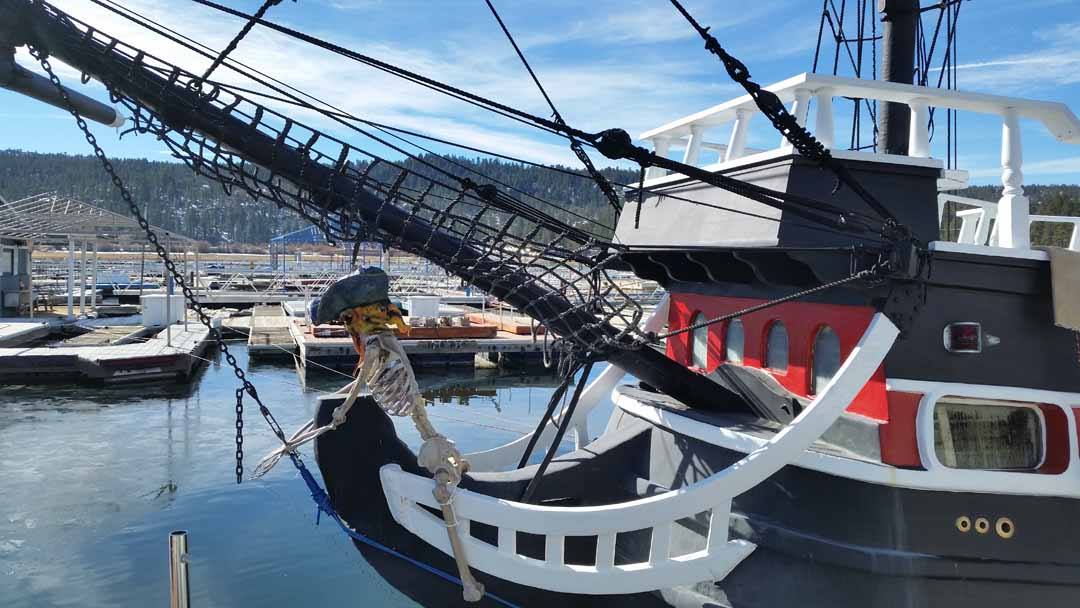
For more information Time Bandit (nee Santana), contact Pirate Ship Lake Tours at Holloway’s Marina at www.bigbearboating.com. The real history of this little prop is that she was born and raised in, of all places, Coronado.
If Paul Harvey were still alive, he just might’ve said, “And now you know the REST of the story.”




